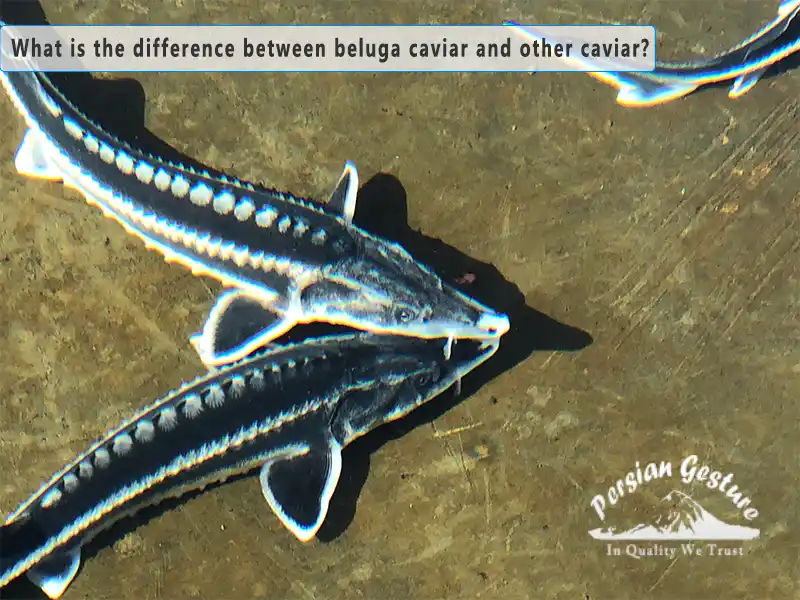What is the difference between beluga caviar and other caviar?
The first big difference between beluga caviar and other types of caviar is the size of the eggs. Beluga caviar can be identified due to having relatively smaller eggs compared to other caviar, and this caviar has a design similar to a human eye. Beluga caviar eggs can vary in diameter from 2-3 mm. This large size gives beluga caviar a unique texture and flavor that sets it apart from other types of caviar.
Another difference between beluga caviar and other caviar is the color of beluga caviar. The beautiful gray-black color of beluga caviar is not found in other caviar.
Finally, one of the most important differences between beluga caviar and other types of caviar is the source of caviar production. Despite the fact that Huso Huso habitat is the Caspian Sea, it could be farmed in any area under specific conditions regarding climatic condition and environment In other words, beluga caviar from the Caspian Sea stands out from other types of caviar due to its unique size, color and source. Its rarity and high price is one of the important differences between beluga caviar and other caviar.

What is the history of Beluga Caviar?
Beluga caviar has a rich history that dating back to centuries. The sturgeon fish, which produces Beluga caviar, was once found in abundance in the Caspian Sea and Black Sea regions of Europe and Asia. Caviar from these areas was highly sought-after and considered a delicacy by the royalty and wealthy elite.
Beluga caviar is made from the eggs of the Beluga sturgeon, which can take up to 20 years to mature and produce eggs. In the early days, only a small number of sturgeons were caught each year, making the caviar extremely rare and valuable.
In the 19th century, Caviar market developed and consequently the demand for it increased. However, restrictions on harvests and the development of sustainable aquaculture practices have helped to ensure that the industry remains viable today.
Today, Beluga caviar is still considered one of the most prized types of caviar and can be quite expensive. It is often served as a luxury food item at special occasions and high-end restaurants around the world. However, due to its rarity and the conservation efforts being taken to protect the Beluga sturgeon, it is becoming increasingly difficult to obtain genuine Beluga caviar.

